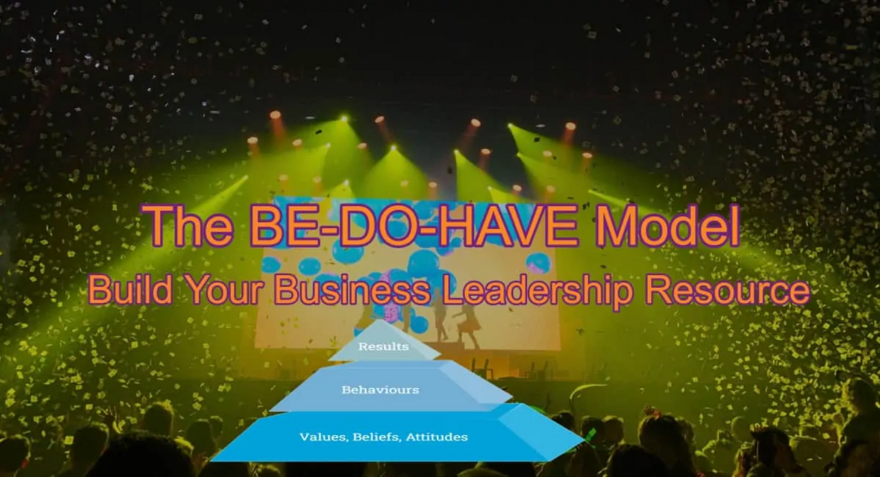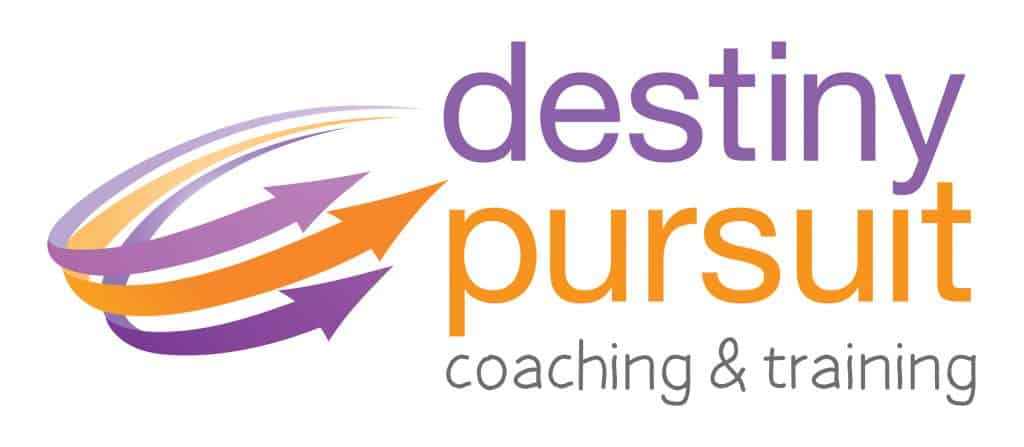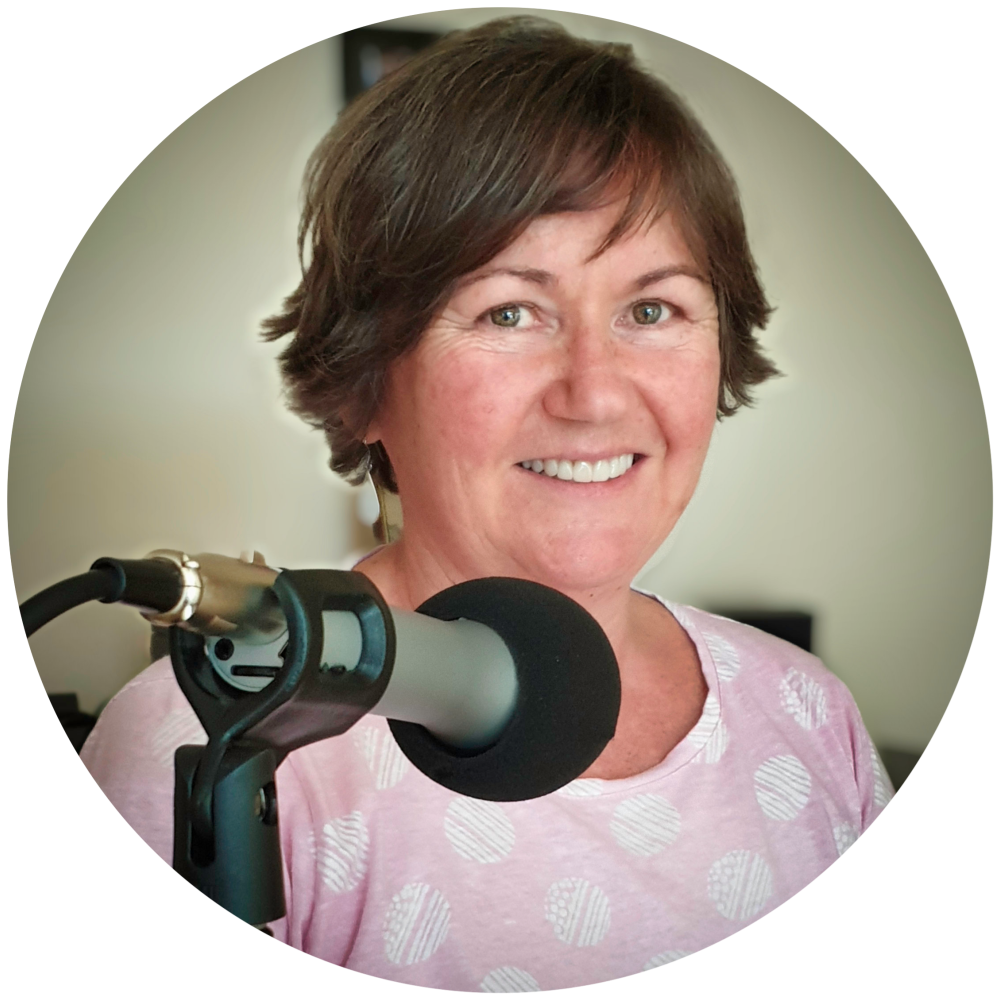The Be-Do-Have Model

The Be-Do-Have Model: How to build your business leadership resource
The BE-DO-HAVE model is a deceptively simple model which comes from Neuro Linguistic Programming (NLP). It provides a framework for leadership that moves beyond the traditional focus on the doing, expanding it to include both how we are being and the ultimate outcome– what we get to have.
I previously mentioned the Be-Do-Have model in my post on Achieving Goals the Smart Way.
Whilst there are many more frameworks we could have included, we trust that following few pages will serve as a useful introduction to developing leaders in your business, and provide you with some practical ways to model and think about developing your business leaders.
Front line managers juggling competing demands often have limited access to formal leadership training or education. In order for new and emerging leaders to have the confidence to move beyond management and step up as business leaders, they need clear frameworks to follow that support them in exploring the leadership landscape they occupy.
BE-DO-HAVE MODEL
THE THREE KEYS TO LEADERSHIP
The BE-DO-HAVE model provides three simple and effective keys that can be used to unlock, understand and master leadership. It is an ideal model because it reflects the structure of Human Development.
Think about a young child who is learning to walk. First the child sees other people walking and they decide: I WANT TO HAVE THAT TOO.
Then they DO whatever they can do to get what they want – they keep going, and failing, going and failing, and going and going - until they get the result.
They also BE whoever they need to be until they get it.
Young children approach the things they have to master with an attitude of intense curiosity. They correct what they are doing based on feedback, and have a steely determination to get the result. They don’t fall over once and say, “Oh well. I’m no good at this walking thing so I will just give it up.” They know what they want to HAVE and they DO whatever needs to be done and BE whoever they need to be in order to HAVE the outcome they desire.
IN SUMMARY:
- Have an outcome in mind –know what you want to HAVE (clear vision)
- Work out the HOW to DO it – the ACTION steps
- BE whoever you need to BE to do what needs to be done to achieve the result.
This is what leadership is all about!
And, because leadership is an influence process you cannot be a leader on your own – others make you a leader. So don’t forget who is following you!
Think for a moment about people you have followed. What was it about them that had you follow them? What attracted you to them? Was it their passion? Commitment? Their courage? How they were BEING?
Or perhaps it was what they were DOING – or how they were DOING it (they worked hard, took action, and did great work that inspired you).
Or maybe it was the result, the Outcome that you also wanted to HAVE – so you shared their VISION, their cause, and that is why you chose them.
Whilst initially you may be attracted to a particular leader because of one or other of these components, for you to contribute to their team long term, you have to accept them, support them and follow them at all levels.
History is littered with examples of leaders who didn’t get this! Quite often we hear things like, “I totally agree with what they want to achieve BUT I cannot endorse how they do it”. The ends don’t justify the means according to the followers! Or perhaps you don’t share the same VISION and don’t want the same outcomes or result. Or it may be you don’t like the leader themselves – perhaps they don’t seem genuine or you suspect their motives.
Any of these 3 things (What you HAVE; What you DO; How you are BEING) can have your followers opt out. You see how powerful this Be-Do-Have model is?
So let’s have a closer look at what this means. What do we mean by ‘How leaders are BEING’? What should leaders actually DO? And why is what they HAVE so important?
BE
Now you know, as a leader you have to BE the person who will do what needs to be done. We hear lots of things about how a leader should BE. Words such as responsible, passionate, tough, honest, creative, positive, committed, confident, inspirational, intuitive, approachable, flexible and supportive are often thrown around to describe how we want our leaders to be.
A quick google search will demonstrate just how extensive and often contradictory these qualities can be. All of these qualities can be fantastic in a given context, though equally they can miss the mark in other situations.
So what is the key in terms of how you are being as a leader?
There appear to be certain consistent characteristics that humans exhibit when they are at their most effective – including when they are leading others.
The qualities that we live and breathe at these times are:
- An unemotional response to Feedback – the disposition to receive feedback without judgement, and to learn from that feedback regardless of how it feels
- A wanton Curiosity – the disposition to actively pursue this feedback and to delve into its implications for the outcome we have in mind, for ourselves, and for others
- A determined focus on the Outcome - the disposition towards aligning everything relevant (eg beliefs, attitudes, decisions, behaviour) to the attaining of the outcome
- And consideration of the Ecology – the disposition to take into account the impact of our actions, on the business as a whole, our own wellbeing, the wellbeing of others and the sustainability of the outcome within the context/business environment.
These are what we would refer to as meta-qualities, in that they sit above other qualities mentioned earlier (like committed, honest, creative, confident, positive).
The critical point here is that as leaders we need to have the behavioural flexibility to BE whatever is needed to DO the job required – so we get to HAVE the results we want (as a team / business).
DO
As a leader it is your job to consider lots of options and explore the different ways to DO what needs to be done, then decide and take action.
In making this decision it is important to consider a number of factors. As we now know the first factor in making a decision is the result or outcome. Anything you DO should take you closer to your result. If it doesn’t, then you need to ask yourself the question, “Why are we doing this?” If the answer doesn’t relate to the outcome then we probably need to stop it and do something else instead. This simple idea can save leaders and organisations serious time, money and energy – all critical resources for a business.
Another important consideration is whether what you will do aligns with the business values and beliefs. As referred to above, this is called making an Ecology Check. The ecology frame you choose forms part of the criteria that you will make decisions on how to do whatever needs to be done.
Finally, as the leader it is OK if you don’t know how to DO it all at the start – you can begin and improve on the way. The purpose is to focus on the result and do whatever is needed (within your criteria) to get it as a leader!
HAVE
Usually we are attracted to a leader or to become a leader for a cause – something we want to HAVE, such as an outcome or result that we believe in. In business it could be our Key Performance Indicators (KPIs) or the successful completion of a project, or you could be aiming for an overall team result.
The result or outcome is the HAVE part of the BE-DO-HAVE model.
The outcome defines your ultimate success, which means it is important to always start with the end in mind – it is what you want to HAVE in the end, that frames and determines what you will DO and who you will BE as a leader.
An important distinction is to focus on the results you want to have, not those you don’t want! In fact many leaders invest lots of time, money and effort making it really clear what they don’t want to have. The problem with this is although everyone knows what they don’t want, few people are very clear about what they DO want.
As a leader your success depends on your ability to clearly communicate what you all will have. And your outcome should be so clear that everyone can see it, hear It, and feel it as if is it already there waiting for them.
Good (and great) leaders write about it, talk about it, share it – put it out there so everyone knows where we are going and will recognise it when we arrive!
So, defining the HAVE part as a leader is pretty important.Be aware that there are lots of tools available to support you in setting clear goals (such as SMART goals, the GROW model) and many other tools to help you get real focus on the outcomes you want (NLP goal defining tools include Keys to an Achievable Outcome, Well-formedness Conditions, and the Five Principles for Success).
In Summary
The Be-Do-Have model gives you the 3 keys to successful leadership. It is a powerful tool that allows you to shift the focus from everything you are doing to ‘who am I being’.
As you continually ask yourself:
- Who am I being and how do I see myself? Who do I want/need to BE?
- What are the choices, decisions and actions I make that move me towards or away from my vision/goal/outcome? What impact are those choices, decisions and actions having?
- Are the outcomes from my choices, decisions and actions what I really want? Is it time to change my outcome?
Your results depend on managing your way of BEING and consistently DOING what you need to do so that you are moving toward what you want.
All 3 components matter: Be-Do-Have. With them in alignment you will ensure you get the outcome you have decided you will HAVE.
Joanne Clark
Joanne Clark is an Internationally accredited Master Trainer of NLP who has been delivering NLP training since 2011. Being on her feet in front of training rooms is where Jo loves to be and her passion for inclusive and immersive training that delivers outstanding learning outcomes is apparent to everyone in her training rooms. On average Jo delivers 140 days of training per year in addition to online webinars, guest speaker events and group coaching.
“NLP is at the core of all my training and coaching, it is at the core of who I am, how I interact and connect with people. I am absolutely passionate about spreading the NLP tools across the planet as I endeavour to support Robert Dilts’s vision of Creating a world to which people want to belong.” Joanne Clark
Certified Master Trainer of NLP; Master Practitioner NLP, Hypnotherapy & Matrix Therapies; Performance Coach; Cert IV Coaching; Advanced Practitioner in Coaching; Cert IV in Business; BA(Hons); Majors in Sociology and Psychology; Parent Education Leadership Training (PELT) Certificate; Mother of four children; Private Pilot (PPL); Diploma in Life Coaching


0 comments
Leave a comment
Please log in or register to post a comment